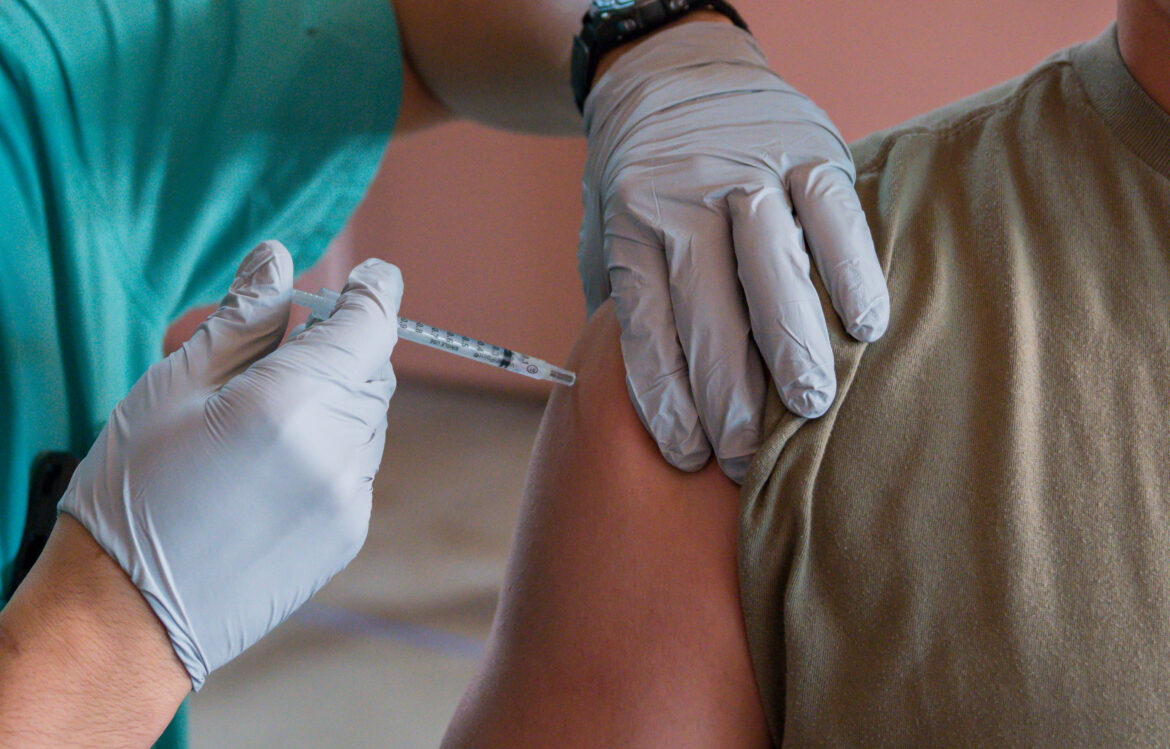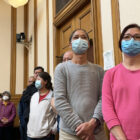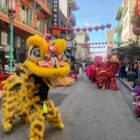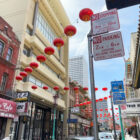Low vaccination rates in several pockets of the Bayview-Hunters Point neighborhood could help explain persistently high cases of COVID-19 in San Francisco’s southeast, recently released data indicates.
Neighborhood-level numbers show the Bayview’s overall vaccination rate of 88% is on par with the most vaccinated areas in the city. But the data released this week shows a large disparity in the percentage of vaccinated residents among different census tracts, revealing where most of the Bayview’s thousands of unvaccinated residents are probably located.
Local organizations have been requesting the information, which is publicly available in at least one other Bay Area county, for months to better target their vaccination outreach. After releasing the data to the Public Press last week, officials shared an updated version with Bayview community groups Tuesday.
“Particularly of concern, is that we need to advocate very hard at increasing testing in those places with extremely low vaccination rates, because we want to help community protect itself,” said Michelle Pierce, executive director of the Bayview Hunters Point Community Advocates. “This really allows us to concentrate in those areas.”
In a written statement, the Department of Public Health said it has been sharing this information with local groups since May.
“SFDPH works with a wider group of community partners, many of which may not attend the weekly coordination meetings and may not necessarily have seen the data presentations shared at those convenings,” the statement read.
Prior to Tuesday’s meeting, Dr. Kim Rhoads, associate professor of epidemiology and biostatistics at the University of California, San Francisco, also said she had not seen census-tract-level vaccination data for San Francisco and to her knowledge, neither had the groups attending the weekly meetings. Rhoads has been attending them since early August, she said.
When health department staff presented the information as PowerPoint slides during Tuesday’s video meeting, Dr. Monique LeSarre, executive director of local nonprofit Rafiki Coalition, said in a text message to all attendees: “Can we get these ASAP?”
Rhoads addressed the slides, and the department’s staff: “Some of the community partners who are on the ground could probably use these to help direct their activities, mobilizing people.”
“Yes please,” LaSarre said via text comment.
56% vaccination rate in one census tract
The COVID-19 case rate in the Bayview has been higher than in any other neighborhood in recent months, as well as during the pandemic overall. It has seen about 1,300 cases per 10,000 residents since March 2020. It also has the third-most deaths, at 49, city data shows. Citywide, the average case rate is 560 per 10,000 residents.
Variation in the vaccination rate within sections of the Bayview might help explain why infections have been so numerous there, said Dr. Naveena Bobba, deputy director of health at the San Francisco Department of Public Health.
In one census tract, containing Hilltop Park and Youngblood Coleman Playground, the vaccination rate was 56%, with an estimated 2,000 unvaccinated people, according to mid-August figures from the health department. In the census tract immediately to the east, containing India Basin and Heron’s Head Parks along the shoreline, the rate was 63%, with an estimated 1,100 unvaccinated people.
Elsewhere in the neighborhood, rates approached 90%. Tuesday’s updated figures showed that vaccination levels had increased slightly in the most problematic areas.
In all tracts combined, nearly 6,000 people were estimated to be unvaccinated.
Vaccination rates vary within many San Francisco neighborhoods, Bobba told the Public Press, but in the Bayview the impact on infections could be greater because it is so populous. It is home to about 38,000 residents, making it the sixth-densest area among those tracked for their infection and vaccination rates.
The Bayview is also home predominantly to people of color, who have experienced higher COVID-19 infection and death rates than white people in San Francisco. People of color make up 82% of the neighborhood’s residents, compared with 52% citywide, according to figures from the city’s Planning Department. Early in the pandemic, high rates in the Bayview were likely due to crowded living environments and residents who continued working as many industries slowed, Bobba said.
“We know that frontline workers who couldn’t shelter in place and had to go to work really did bear the brunt of the pandemic,” Bobba said. “And a lot of those frontline workers live in the Bayview.”
The health department’s numbers are imperfect because they draw from small data sets that rely on self-reporting from vaccinated people, Bobba said. Staff at vaccination sites ask shot recipients where they live, potentially recording the information inconsistently as they upload it to the state. The city’s health department used this data to calculate vaccination rates for each census tract.
Nevertheless, Bobba said the rates are useful for indicating where local nonprofits should focus their outreach efforts, allowing them to find the largest pockets of unvaccinated people and encourage them to get the shots.
While Alameda County shared data, Bayview groups waited
Alameda County has been sharing census-tract-level vaccination data with local groups that use it to target their outreach, said Rhoads, who has been involved in coordinating efforts there and in the Bayview.
“In order to do that effectively and not duplicate those efforts, we need to know which streets, in which areas, can be divided up so that all the community partners can work together,” Rhoads said. “You take this census tract, and I’ll take this census tract.”
After seeing the census-level data for the first time, Pierce said it implies that some outreach efforts have been focused on the wrong areas.
“We’ve only been targeting places that are 85% or above, vaccinated,” Pierce said. “What’s the point of that when you have a census tract that’s at 56% and 63%? Why are we not targeting that? I’m sorry, that just makes more sense to me.”
Gaining trust in the community
Many members of the African American community have learned to distrust the government because of horrifying deceptions like the Tuskegee syphilis experiment of 1932, said Corey Monroe, who grew up in the Bayview and works for Community Advocates. The Bayview is home to many of the city’s Black residents, who make up 28% of the neighborhood.
Some of the Bayview’s staunchest COVID-19 skeptics doubt that the disease is real and have told Monroe that the government “wants to poison us. They want to kill us all,” he said. “They don’t think anybody cares if we live or die. They just don’t trust the system at all. After all these years, with everything they did, why would we trust them now?”
“But I understand; I’m kind of skeptical too,” he said, laughing. “I was like, I’m going to go get mine where all the white people are getting the shot. Hey, if I’m going to die then they’re going to die too.”
That distrust is what makes outreach efforts critical to helping the public protect themselves, he said. “It’s old mentalities, out of fear, that we have to break.”
Monroe and others have been methodically gaining the trust of Bayview residents, bringing them food and personal-protective equipment and educating them about the coronavirus in an effort to encourage vaccinations. When someone is willing, but cannot make it to a vaccination clinic, staff members bring the shot to them.
Agustine Angel has been knocking on doors for Community Advocates. On one visit, he met an elderly Latina resident whose husband had died of COVID-19. She was dubious about the vaccine, though she was the only member of the household who had not received it.
After Angel and the accompanying nurse answered all her questions, she agreed to receive an injection then and there.
Angel recalled what she said: “This was a sign from God for me to get vaccinated, because who else would come to my door to offer this?”












